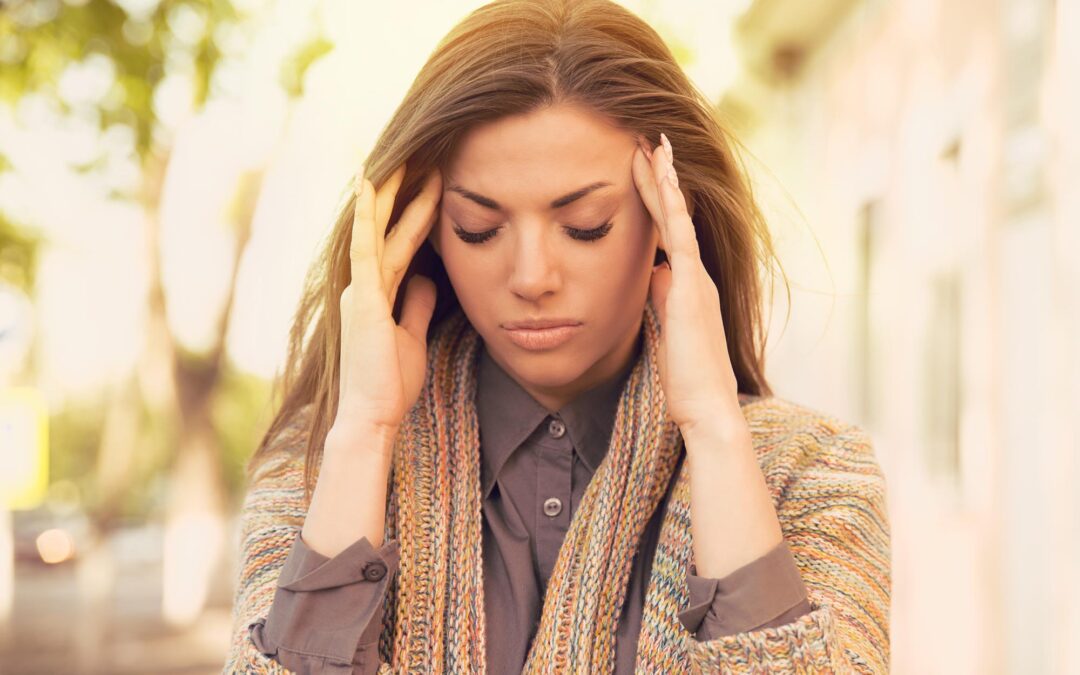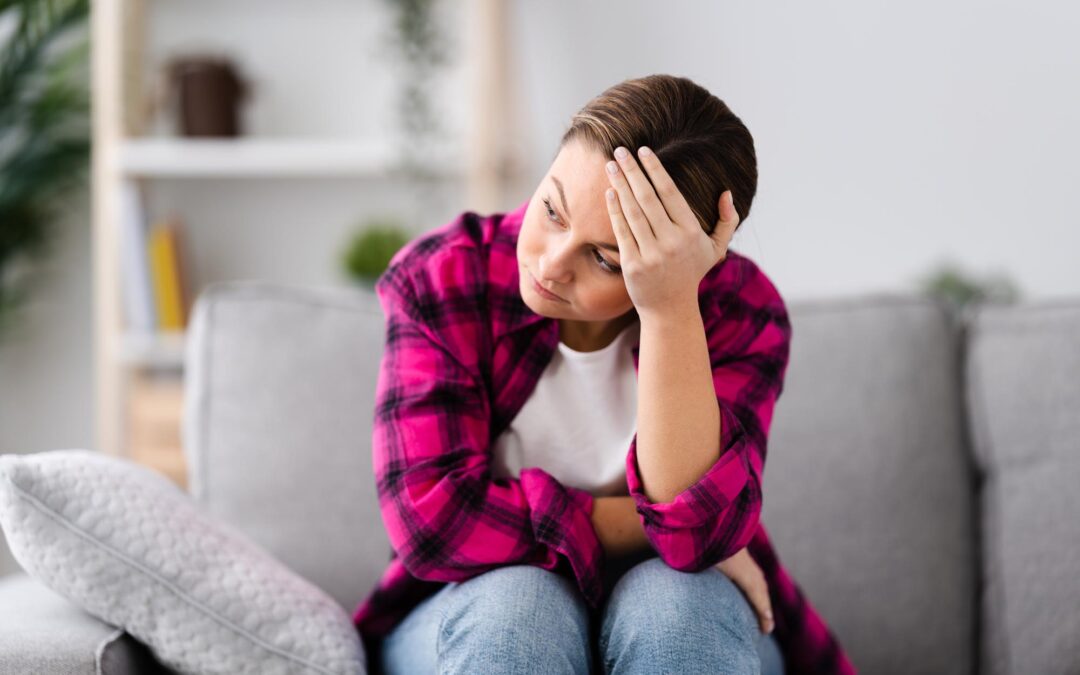Understanding Seasonal Affective Disorder (SAD)
Seasonal Affective Disorder (SAD) is a type of depression that occurs in a specific season, affecting millions of women in the United States. There are two main patterns of SAD:
1. Winter-Pattern SAD
- Symptoms begin in late fall or early winter
- Depression lifts during spring and summer months
- Most common form, affecting 5% of U.S. adults
2. Summer-Pattern SAD
- Depression starts in late spring or early summer
- Symptoms improve during fall and winter months
- Less common but equally impactful
Women with SAD often experience these symptoms:
- Persistent feelings of hopelessness
- Changes in sleep patterns
- Weight fluctuations
- Social withdrawal
- Difficulty concentrating
- Loss of interest in activities
Several factors contribute to the development of SAD:
Biological Factors
- Disrupted circadian rhythms
- Decreased serotonin levels
- Imbalanced melatonin production
Risk Factors
- Living far from the equator
- Family history of depression
- Previous mental health conditions
- Age (young adults are more susceptible)
Women are four times more likely to be diagnosed with SAD than men. Your geographical location plays a crucial role – those living in northern regions with shorter winter days face higher risks. Understanding these patterns and risk factors helps identify early warning signs and seek appropriate treatment.
If you or someone you know is struggling with SAD, it’s important to reach out for help. Contact a professional who can provide the necessary support and guidance.
Diagnosis and Treatment Options for Seasonal Affective Disorder
Recognizing SAD symptoms is the first step – seeking professional help is crucial for accurate diagnosis and effective treatment. Mental health providers use specific criteria to evaluate seasonal depression patterns:
Diagnostic Process
- In-depth assessment of depressive episodes
- Review of seasonal pattern occurrence
- Evaluation of impact on daily functioning
- Documentation of symptoms for two consecutive years
Mental health professionals look for specific symptoms during seasonal transitions. Your provider will track the timing, duration, and severity of your symptoms through detailed questionnaires and personal interviews.
Key Diagnostic Criteria
- Depressive episodes coinciding with specific seasons
- Full remission during other seasons
- Pattern documented for at least two years
- Seasonal episodes significantly outnumber non-seasonal depression
Treatment Options
Light Therapy
Light therapy shows particular promise for winter-pattern SAD, with many women reporting improvement within 1-2 weeks of consistent use. The right SAD lamp, positioned correctly at your desk or breakfast table, can significantly impact your daily mood and energy levels.
Treatment Guidelines:
- Usage of specialized SAD lamps (10,000 lux)
- Daily exposure for 20-30 minutes
- Morning sessions prove most effective
- Consistent use throughout affected seasons
Psychotherapy
Cognitive Behavioral Therapy (CBT) has proven effective in treating SAD by addressing negative thought patterns and developing coping strategies. Stress management techniques may also be incorporated into the therapeutic process.
Therapeutic Focus Areas:
- Identification of negative thought patterns
- Development of coping strategies
- Stress management techniques
Medication Options
In certain cases, medication may be prescribed as part of the treatment plan. Selective Serotonin Reuptake Inhibitors (SSRIs) and Bupropion XL are commonly used medications for SAD.
Medication Considerations:
- Dosage adjustments based on seasonal needs
- Preventive treatment before symptom onset
Your treatment plan may include a combination of these approaches. A mental health provider will help determine the most effective treatment combination based on your specific symptoms, lifestyle, and seasonal pattern. Regular monitoring allows for adjustments to your treatment plan as needed.
Coping Strategies for Women with SAD
Living with Seasonal Affective Disorder requires a multi-faceted approach to managing symptoms and maintaining mental well-being. Women can implement several practical strategies to cope with SAD’s challenges effectively.
1. Self-Care Practices
Creating a structured self-care routine helps establish stability during difficult periods. Here’s how you can build an effective self-care foundation:
Nourish Your Body
- Start your day with protein-rich breakfast options
- Include omega-3 fatty acids through fish, nuts, or supplements
- Stay hydrated with warm beverages like herbal tea
- Choose vitamin D-rich foods such as eggs and fortified dairy products
Physical Activity
- Set up a home workout space near windows for natural light exposure
- Schedule 30-minute daily walks during peak daylight hours
- Try gentle exercises like stretching or yoga when energy levels are low
- Join indoor fitness classes to combine exercise with social interaction
Goal Setting
- Break large tasks into smaller, manageable steps
- Create a daily to-do list with 2-3 priority items
- Celebrate small accomplishments
- Adjust expectations during challenging days
Sleep Hygiene
- Maintain consistent sleep and wake times
- Create a relaxing bedtime routine
- Keep your bedroom cool and dark
- Limit screen time before bed
Environment Optimization
- Rearrange furniture to maximize natural light exposure
- Use bright, cheerful colors in your living space
- Keep your home clean and organized
- Create a cozy corner for relaxation
Remember to adjust these practices based on your energy levels and daily capacity. Your self-care routine should feel supportive rather than overwhelming. Small, consistent actions often lead to significant improvements in managing SAD symptoms.
2. Social Connections and Engagement
Social isolation during winter months can intensify SAD symptoms. Building and maintaining strong social connections acts as a protective factor against depression and anxiety.
Stay Connected Through Technology
- Schedule regular video calls with distant family members
- Join online support groups for women with SAD
- Use social media mindfully to maintain friendships
- Share your experiences through virtual coffee dates
Create Social Routines
- Plan weekly indoor gatherings with friends
- Start a book club that meets during the winter months
- Host potluck dinners to combine socializing with healthy eating
- Schedule regular walking dates with a friend
Engage in Mood-Boosting Activities
- Take group exercise classes
- Participate in community volunteer work
- Join winter sports clubs or indoor recreational teams
- Attend local workshops or classes
Build Support Networks
- Connect with other women who experience SAD
- Share your feelings with trusted friends
- Join professional women’s networking groups
- Participate in community events
Creating social connections doesn’t require grand gestures. Small, consistent efforts to reach out and engage with others can significantly impact your mental well-being. When you feel the urge to isolate, remember that maintaining social connections helps combat SAD symptoms and provides emotional support during challenging times.
3. Mindfulness and Relaxation Techniques
Mindfulness practices offer powerful tools to manage SAD symptoms by helping you stay grounded in the present moment. These techniques can break the cycle of negative thoughts and reduce anxiety during challenging seasonal periods.
Essential Mindfulness Practices:
- Start with 5-minute meditation sessions, focusing on your breath
- Practice body scan meditation before bedtime
- Use guided imagery to visualize peaceful, sunny environments
- Try mindful walking, especially during daylight hours
- Keep a gratitude journal to shift focus from negative thoughts
Relaxation Techniques for Immediate Relief:
- Progressive muscle relaxation: Tense and release each muscle group
- Deep breathing exercises: Practice 4-7-8 breathing (inhale for 4, hold for 7, exhale for 8)
- Gentle yoga poses like child’s pose or legs up the wall
- Sound therapy using nature sounds or calming music
- Aromatherapy with essential oils such as lavender or bergamot
Creating a dedicated relaxation space in your home supports these practices. Set up a corner with comfortable cushions, soft lighting, and calming elements. Practice these techniques for 10-15 minutes daily, particularly when you notice SAD symptoms intensifying.
Incorporating mindfulness into daily activities helps maintain emotional balance. Simple actions like mindful eating or conscious breathing during routine tasks can significantly impact your mental well-being during challenging seasons.
Preventing Future Episodes of SAD
Proactive prevention strategies can significantly reduce the impact of SAD on your daily life. Starting treatment before symptoms appear each year creates a protective buffer against severe depressive episodes.
Early Intervention Tips:
- Schedule a therapy appointment 4-6 weeks before your typical symptom onset
- Begin light therapy sessions as days grow shorter
- Track your mood patterns throughout the year to identify early warning signs
- Keep a consistent sleep schedule aligned with natural daylight hours
Year-Round Lifestyle Adjustments:
- Create a bright, well-lit home environment with natural spectrum bulbs
- Position your workspace near windows to maximize natural light exposure
- Plan outdoor activities during peak daylight hours
- Structure your daily routine to include regular physical activity
Environmental Modifications:
- Paint your living spaces in light, reflective colors
- Install mirrors strategically to amplify natural light
- Remove heavy window coverings that block sunlight
- Consider a dawn simulator alarm clock for gentler winter wake-ups
A personalized prevention plan helps you maintain emotional stability through seasonal transitions. Working with your healthcare provider to develop these strategies ensures they align with your specific needs and circumstances.
Remember to document which prevention methods work best for you – this information becomes invaluable for managing symptoms in future seasons.
Seeking Help from LightWork Therapy and Recovery
Living with Seasonal Affective Disorder doesn’t mean you have to face the challenges alone. At LightWork Therapy and Recovery, we understand the unique struggles women face when dealing with SAD. Our specialized mental health treatment center in Massachusetts offers comprehensive support tailored to your individual needs.
Our dedicated team of mental health professionals provides the following:
- Evidence-based treatment approaches
- Personalized care plans
- Women-focused therapeutic environment
- Flexible scheduling options
- Year-round support systems
Your mental health matters. If you notice SAD symptoms affecting your daily life, reaching out for professional help is a sign of strength. LightWork Therapy and Recovery creates a safe, nurturing space where you can explore your experiences and develop effective coping strategies.
Take the first step toward managing your SAD symptoms – contact LightWork Therapy and Recovery to schedule a consultation. Your journey to better mental health starts here.





